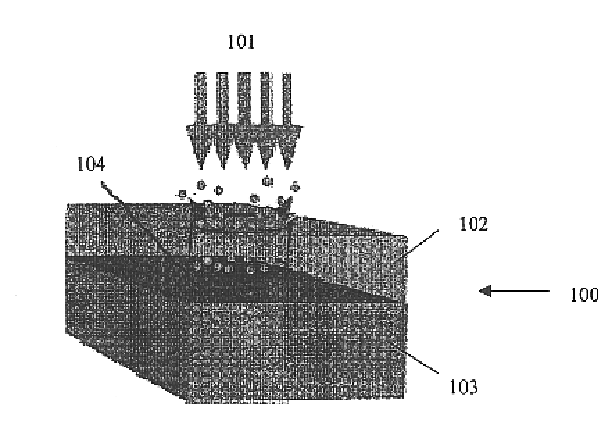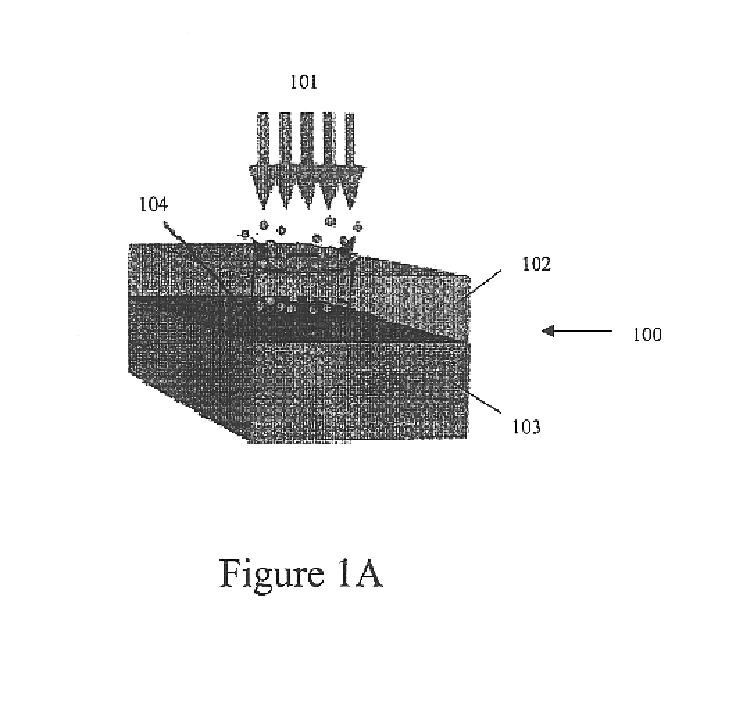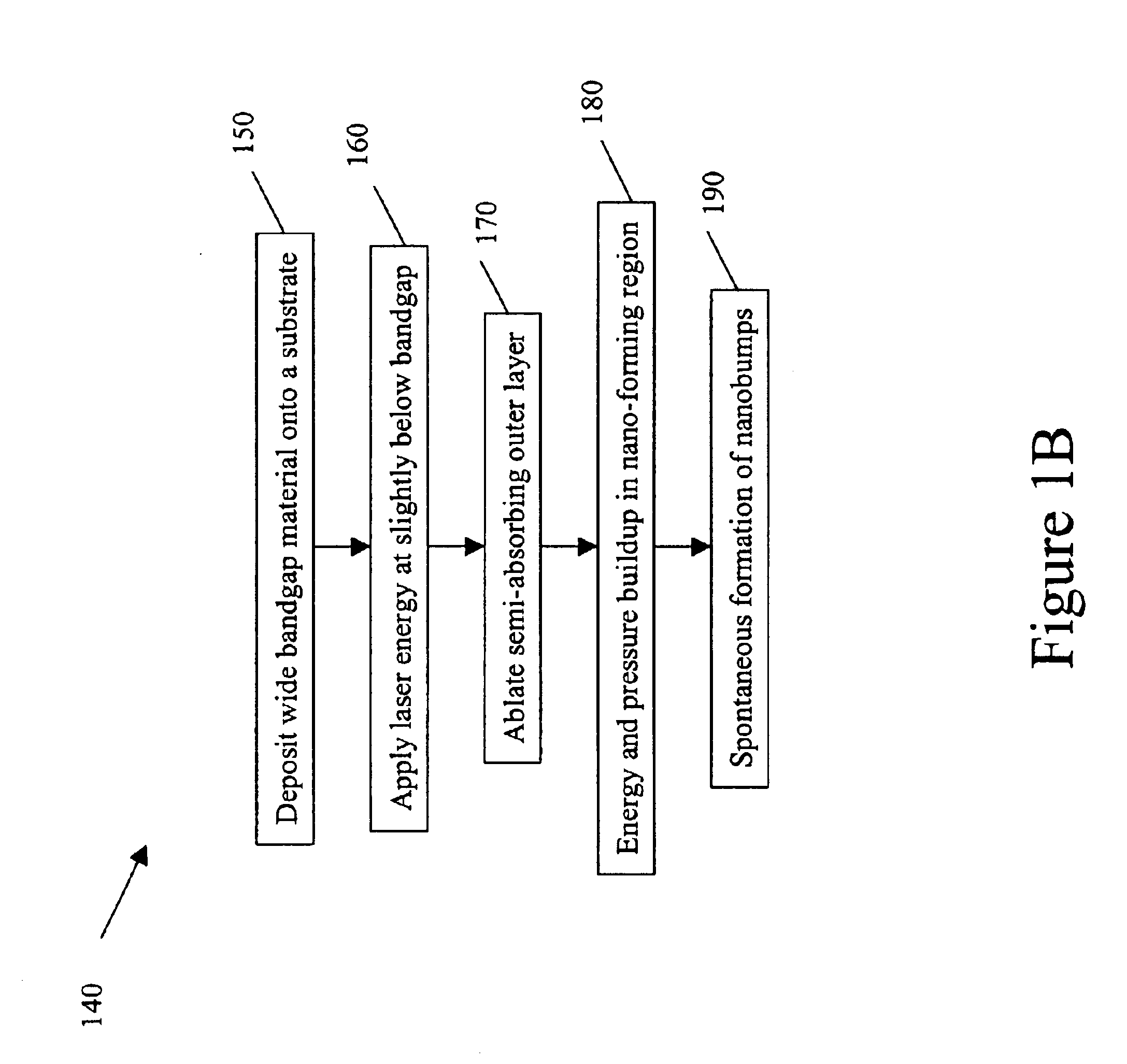Self-assembled nanobump array stuctures and a method to fabricate such structures
a self-assembling, nano-bump array technology, applied in the direction of prosthesis, magnetic bodies, instruments, etc., can solve the problems of systematic atomic level characterization, technological barriers to fabricating functional device structures, and development of a controllable synthesis technology for making nano-sized structures
- Summary
- Abstract
- Description
- Claims
- Application Information
AI Technical Summary
Problems solved by technology
Method used
Image
Examples
Embodiment Construction
The exemplary embodiments and / or exemplary methods of the present invention involve using a laser to irradiate composite layered structures to induce a spontaneous formation of nano-sized array structures in a controllable manner. The micro and / or nano-sized array structures (that is, the “nanobumps”) arise from the layered composites during ablation of a semi-absorbing outer layer. The laser includes, for example, an Excimer laser. Furthermore, the exemplary method may involve depositing a wide bandgap semiconductor material upon one or more underlying substrate layers to form the composite-layered structure. The laser energy is then applied to the composite layered structure using an Excimer laser at a predefined wavelength. If the applied laser energy is slightly below the bandgap of the deposited wide bandgap semiconductor material, a partial or semi-absorption of the laser energy may occur in the deposited material. The semi-absorbing wide bandgap semiconductor material compris...
PUM
 Login to View More
Login to View More Abstract
Description
Claims
Application Information
 Login to View More
Login to View More - R&D
- Intellectual Property
- Life Sciences
- Materials
- Tech Scout
- Unparalleled Data Quality
- Higher Quality Content
- 60% Fewer Hallucinations
Browse by: Latest US Patents, China's latest patents, Technical Efficacy Thesaurus, Application Domain, Technology Topic, Popular Technical Reports.
© 2025 PatSnap. All rights reserved.Legal|Privacy policy|Modern Slavery Act Transparency Statement|Sitemap|About US| Contact US: help@patsnap.com



